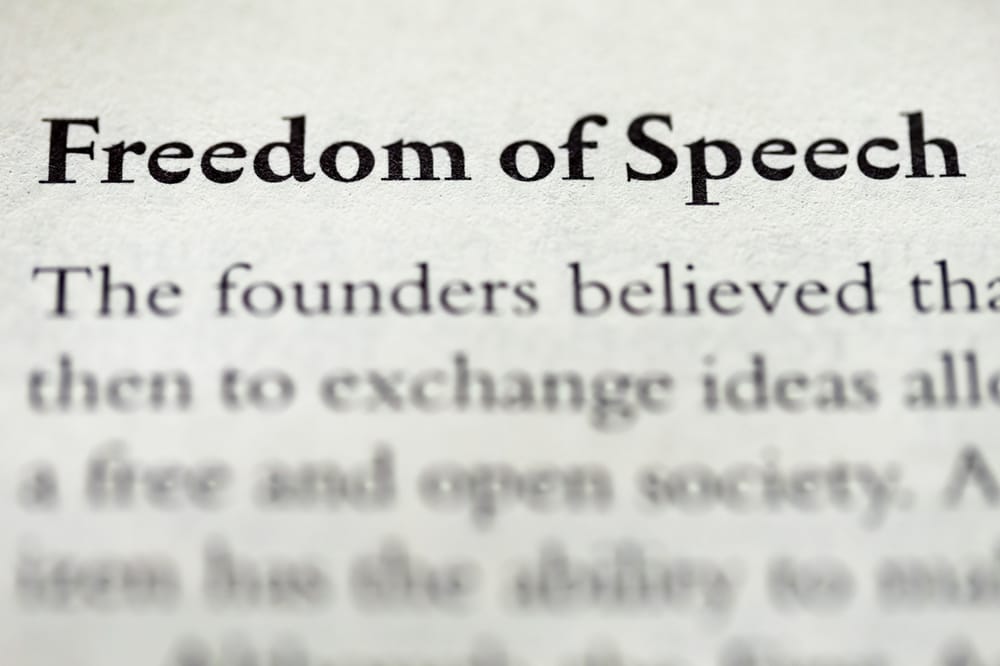In the contemporary digital landscape, the rapid dissemination of information and the ubiquity of global communication have fundamentally transformed the nature of free speech. The Internet, as a revolutionary platform for expression, presents both unprecedented opportunities and complex challenges to our understanding of First Amendment rights under the U.S. Constitution. As society navigates these evolving dynamics, so too must our legal frameworks adapt to ensure that fundamental freedoms are preserved while addressing new realities.
The Supreme Court of the United States has been at the forefront of interpreting how traditional free speech principles apply within this digital milieu. Through a series of landmark decisions, the Court has addressed issues ranging from online harassment to the regulatory practices of technology companies, thereby establishing precedents that will influence future legal landscapes governing online expression.
Reno v. American Civil Liberties Union (1996)
This pivotal ruling recognized cyberspace as a vital forum for free speech, meriting full constitutional protection. The decision in Reno v. ACLU (1997) set a critical precedent: any regulation of internet content must be carefully balanced against First Amendment rights. Justice John Paul Stevens delivered a unanimous opinion declaring that the contested provisions were unconstitutional due to their overbroad nature, which impermissibly restricted adult access to lawful materials.
The Court emphasized that unlike traditional broadcast media—where time-channeling can regulate content without infringing on First Amendment protections, as established in FCC v. Pacifica Foundation (1978)—such measures are less feasible on the Internet due to its unique characteristics as a vast democratic forum for global communication. The central issue was whether these restrictions infringed upon adults' constitutional rights while attempting to shield minors from inappropriate content. Applying strict scrutiny, as seen in Miller v. California (1973), SCOTUS required that laws restricting constitutionally protected expression be narrowly tailored to avoid unnecessary infringement on free speech rights.
Ashcroft v. Free Speech Coalition (2001)
The ruling in Ashcroft v. Free Speech Coalition (2001) is significant for its reinforcement of First Amendment protections against overly broad legislative measures that seek to regulate speech based on its content. It underscores the principle that laws must be narrowly tailored to serve a compelling state interest without unnecessarily infringing on free expression. This decision has had a lasting impact on jurisprudence by setting limits on governmental authority to regulate virtual depictions and has influenced subsequent cases involving digital content and free speech, such as United States v. Williams (2008), which further clarified the boundaries of permissible regulation in this area.
In its decision, the Supreme Court struck down the challenged provisions of the CPPA, holding that they were unconstitutional under the First Amendment. The Court reasoned that the CPPA's prohibitions on virtual child pornography were too broad because they banned a substantial amount of speech that was neither obscene nor produced by exploiting real children. The Court distinguished this case from New York v. Ferber (1981)New York v. Ferber (1981), where the prohibition of child pornography was upheld due to the state's compelling interest in protecting children from exploitation. In contrast, the CPPA targeted materials that did not involve actual children, thus lacking the same justification. The Court emphasized that the government could not suppress lawful speech as a means to control unlawful conduct, citing Stanley v. Georgia (1969) and Reno v. American Civil Liberties Union (1996) as precedents for protecting expressive content under the First Amendment.
The Supreme Court case Ashcroft v. Free Speech Coalition (2001) addressed the constitutionality of certain provisions within the Child Pornography Prevention Act of 1996 (CPPA). The CPPA extended the federal prohibition on child pornography to include not only images of actual children but also computer-generated images and other depictions that appear to be of minors engaging in sexually explicit conduct. The legal issue at the heart of the case was whether these provisions violated the First Amendment's free speech protections by criminalizing speech that did not involve actual children. The Free Speech Coalition, an adult entertainment trade association, challenged the law, arguing that it was overly broad and infringed upon lawful expression.
Justice Anthony Kennedy's majority opinion highlighted potential chilling effects on legitimate expressive works due to broad language in the Child Pornography Prevention Act (CPPA), which could encompass lawful adult content merely because it might appear to involve minors. This reasoning aligns with earlier rulings like New York v. Ferber (1981), where criminalizing actual child pornography was justified but extending prohibitions into virtual or simulated imagery was deemed excessive.
Morse v. Frederick (2006)
The decision in Morse v. Frederick (2007) is significant as it delineates the boundaries of student speech rights, particularly concerning messages that conflict with educational missions. It underscores the principle that while students do not "shed their constitutional rights to freedom of speech or expression at the schoolhouse gate," as established in Tinker v. Des Moines (1969), those rights are not absolute and can be curtailed under certain circumstances. This case is often discussed alongside Bethel School District No. 403 v. Fraser (1986) and Hazelwood School District v. Kuhlmeier (1988), which also explore the extent of school authority over student expression. Collectively, these cases contribute to a nuanced understanding of First Amendment rights within educational settings, balancing individual freedoms with institutional responsibilities.
In a 5-4 decision, the Supreme Court ruled in favor of Morse, holding that schools may restrict student speech that is reasonably viewed as promoting illegal drug use. Chief Justice Roberts, writing for the majority, emphasized that the special characteristics of the school environment and the governmental interest in preventing drug abuse among students justified the restriction on Frederick's speech. The Court distinguished this case from Tinker v. Des Moines Independent Community School Dist, where student expression was protected unless it caused substantial disruption. Here, the Court found that the banner's message was not political speech but rather an encouragement of illegal activity, which schools have a vested interest in curbing.
The Supreme Court case Morse v. Frederick (2007) addressed the balance between student free speech rights and school authority, specifically in the context of a school-supervised event. The case arose when Joseph Frederick, a high school student, displayed a banner reading "BONG HiTS 4 JESUS" during a televised parade that was part of the Olympic Torch Relay. The principal, Deborah Morse, confiscated the banner and suspended Frederick, citing the school's policy against promoting illegal drug use. Frederick sued, claiming his First Amendment rights were violated. The legal issue at hand was whether the First Amendment allows public schools to prohibit students from displaying messages promoting illegal drug use at school-supervised events.
This case arose when Joseph Frederick displayed a banner reading "BONG HiTS 4 JESUS" during a school-sanctioned event, leading to his suspension by Principal Morse. The Court ultimately sided with Morse, emphasizing that student speech rights can be limited when messages encourage illegal drug use.
Packingham v. North Carolina (2016)
The ruling in Packingham v. North Carolina is significant for its affirmation of robust First Amendment protections in the context of digital communication. It underscores the principle that laws restricting speech must be carefully scrutinized to ensure they do not unnecessarily infringe on constitutional rights. This decision has had a profound impact on jurisprudence by reinforcing the need for precision in legislative drafting when addressing issues of public safety and free expression online. Related cases such as United States v. Alvarez (2011) and Brown v. Entertainment Merchants Association (2011) further illustrate the Court's commitment to safeguarding free speech against overly broad governmental restrictions, particularly in emerging technological contexts.
In its decision, the Supreme Court struck down the North Carolina statute, holding that it impermissibly restricted lawful speech in violation of the First Amendment. The Court's reasoning emphasized the expansive role of the internet as a forum for free expression and the necessity of protecting access to such platforms. Justice Kennedy, writing for the majority, underscored that the statute was overly broad and not narrowly tailored to serve the state's interest in protecting minors. The Court drew upon precedents such as Reno v. American Civil Liberties Union (1996), which recognized the internet as a unique and vital medium for free speech, and Ashcroft v. Free Speech Coalition (2001), which invalidated overly broad restrictions on speech related to child protection.
The case of Packingham v. North Carolina (2016) presented the United States Supreme Court with a significant First Amendment issue concerning the intersection of free speech and public safety in the digital age. The legal controversy arose when Lester Packingham, a registered sex offender, was convicted under a North Carolina statute that prohibited sex offenders from accessing social networking sites where minors could be present. Packingham challenged his conviction, arguing that the law violated his First Amendment rights by broadly restricting his access to online platforms that are integral to modern communication and information exchange.
The Court found that prohibiting all registered sex offenders from accessing social networking sites was overly broad and violated their free speech rights under the First Amendment, drawing on precedents like Reno v. ACLU (1997) and Ashcroft v. Free Speech Coalition (2001).
Manhattan Community Access Corp. v. Halleck (2018)
In Manhattan Community Access Corp. v. Halleck (2018), the Supreme Court clarified that operating public access channels does not transform private entities into governmental ones subject to First Amendment constraints unless they perform traditional exclusive public functions or are coerced by government policy violations.
Justice Kavanaugh's majority opinion distinguished between government coercion transforming private action into state action versus mere approval being insufficient, referencing cases like Blum v. Yaretsky (1982) and Rendell-Baker v. Kohn (1982).
These cases illustrate how the Supreme Court navigates uncharted waters when applying traditional constitutional principles within our rapidly evolving digital landscape. They have profound implications for understanding freedom of expression online and set legal precedents shaping future internet regulations and policies.
As technology continues advancing at an unprecedented pace, so too will challenges posed by these developments upon our understanding and application of free speech rights under U.S Constitution's First Amendment clause. Therefore, it is crucial for us all—citizens and lawmakers alike—to remain vigilant about protecting this fundamental right while also adapting its interpretation appropriately amidst changing societal norms brought forth by digital age dilemmas such as cyberbullying or fake news phenomena among others yet unknowns awaiting discovery ahead!
✨ Enhanced with AI
This article has been rewritten and enhanced using advanced AI technology to demonstrate improved comprehensiveness, accuracy, and analytical depth while maintaining our scholarly standards.
Stay Ahead with SCOTUS.Etalia.ai
🌟 Discover More with a Subscription 🌟
Experience our enhanced AI-powered legal analysis with SCOTUS.Etalia.ai. Our platform now delivers even more insightful, comprehensive content that demonstrates the latest advances in AI-assisted legal scholarship.







